Abstract
Reduction of a rapid ventricular rate in atrial fibrillation results in a longer diastolic filling period and a higher left ventricular stroke volume but this is offset by reduced contractility and fewer beats per minute; the net effect on cardiac output is uncertain. Sequences of stroke distances were measured by Doppler ultrasound in 60 resting patients with atrial fibrillation to determine the relation between ventricular rate and linear cardiac output. The slope of the cardiac output/ventricular rate relation was positive in all 20 patients with a ventricular rate less than 90 beats per minute and negative in 16 (40%) of 40 patients with a ventricular rate greater than 90 beats per minute. In atrial fibrillation the ventricular rate can be regarded as "controlled" when the cardiac output/ventricular rate slope is positive and "uncontrolled" when the slope is negative--that is when reduction of ventricular rate would lead to increased cardiac output. As so defined, ventricular rate at rest was controlled in every patient when the ventricular rate was less than 90, controlled in 44 (73%) patients when the ventricular rate was 90-140 beats per minute, and uncontrolled in every case when it was greater than 140 beats per minute. Achieving a target ventricular rate of 90 beats per minute in patients with atrial fibrillation at rest would result in control with the least compromise of cardiac output.
Full text
PDF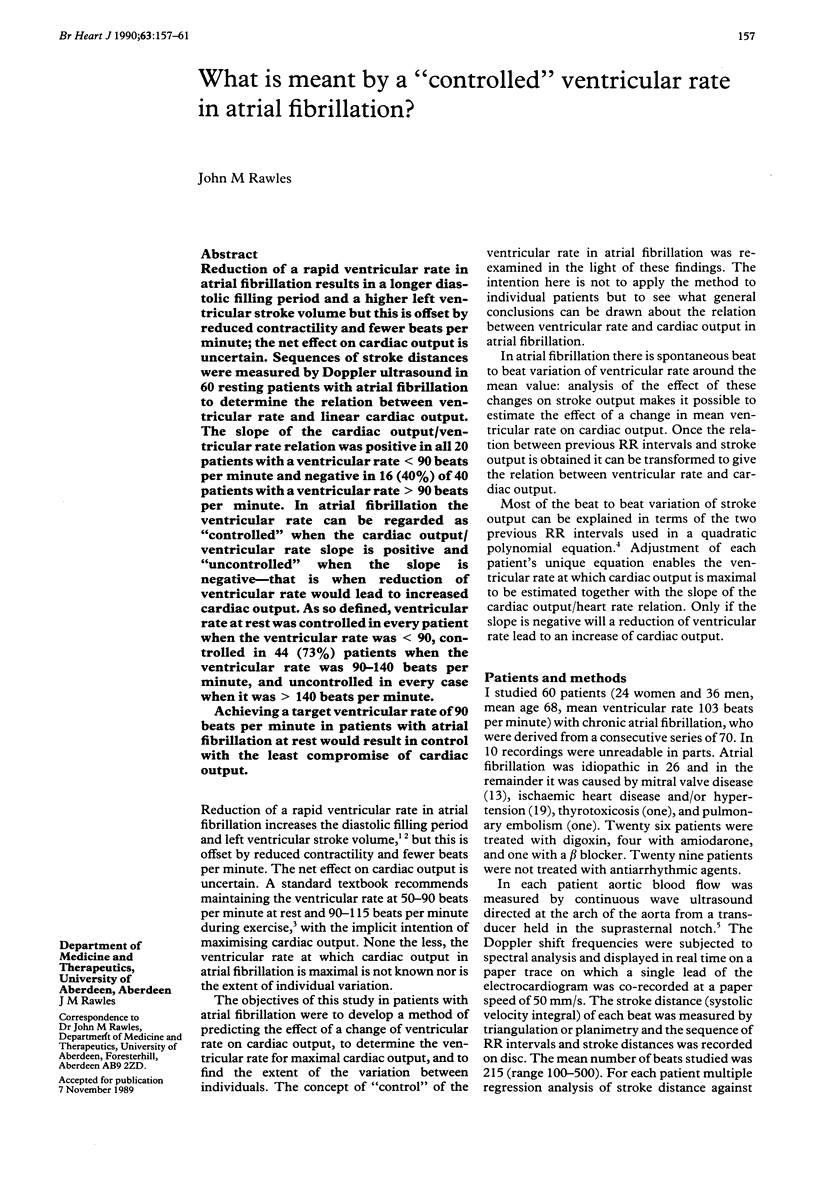
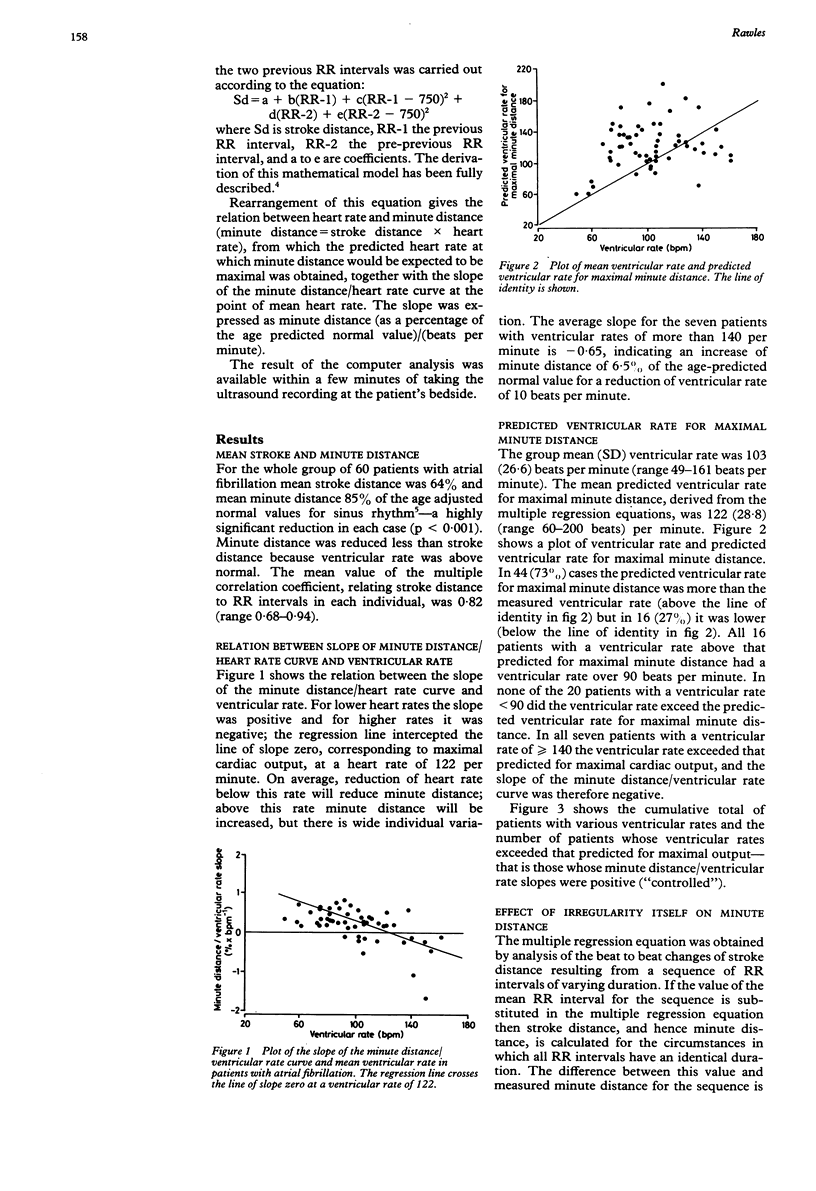
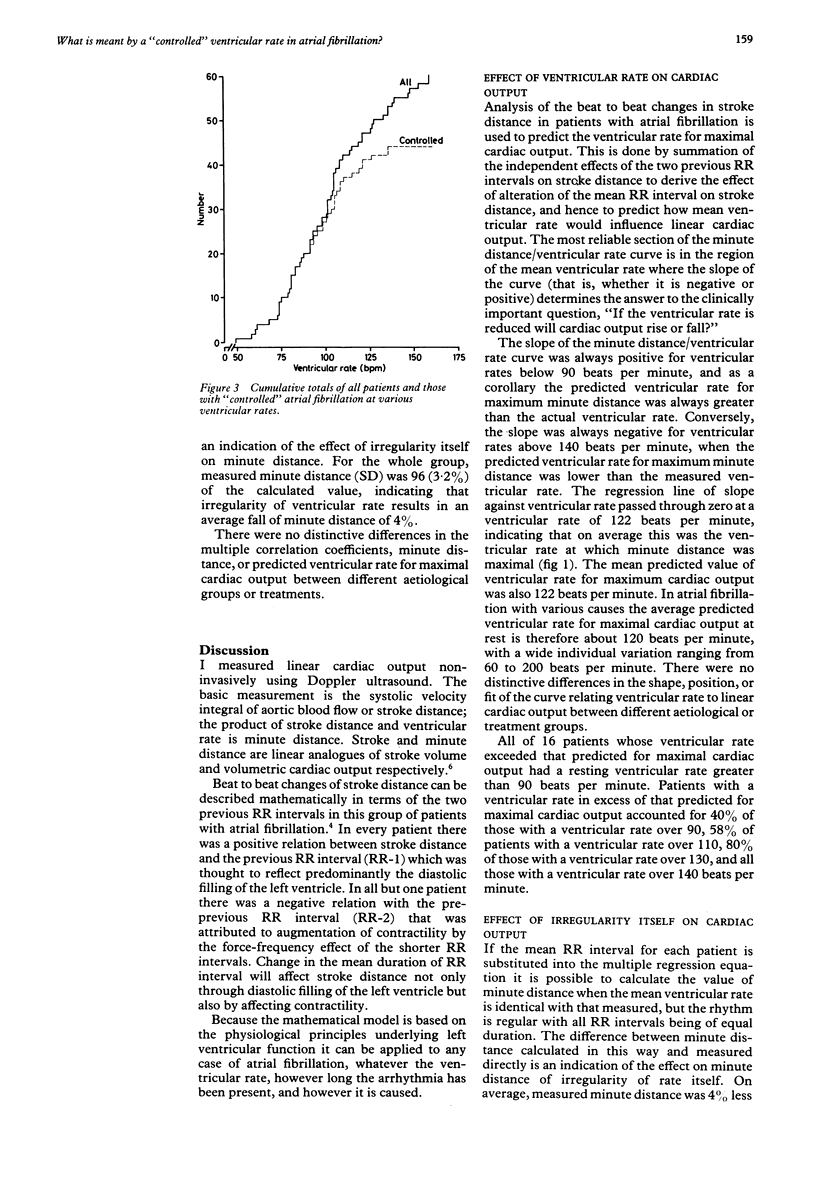
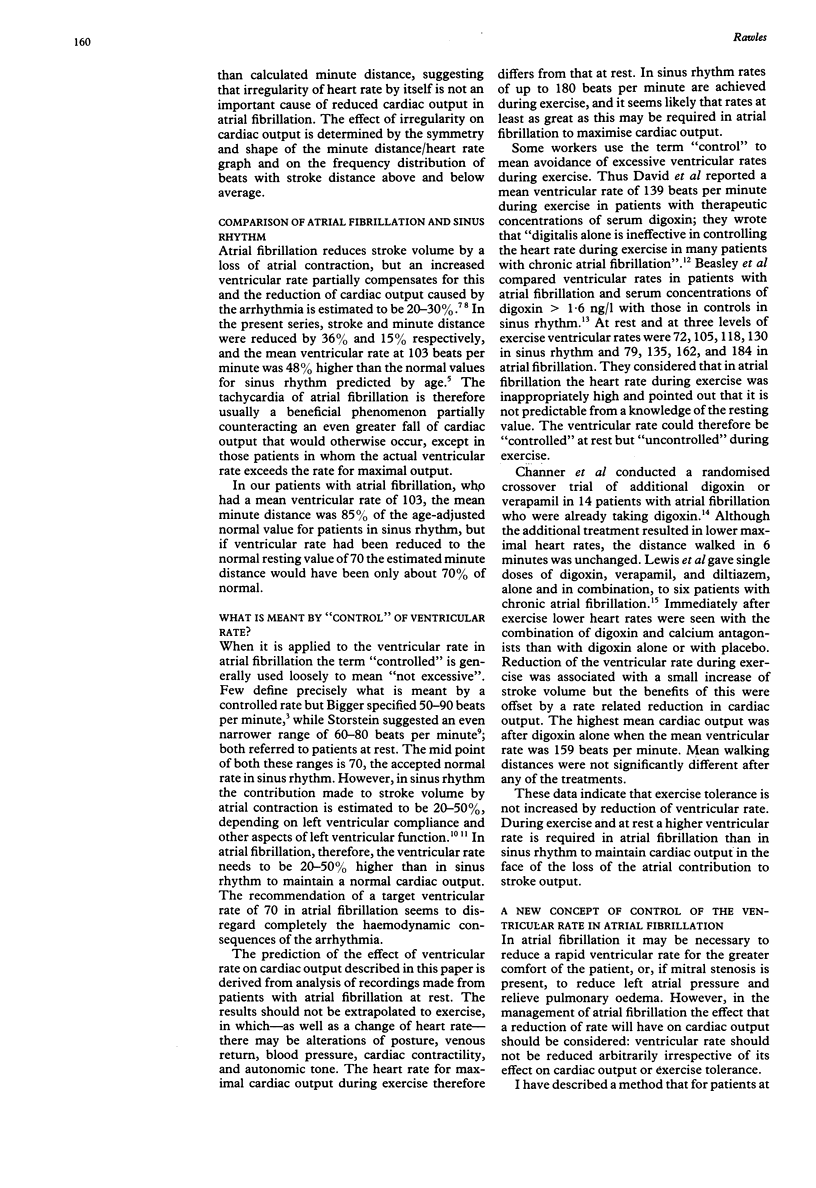
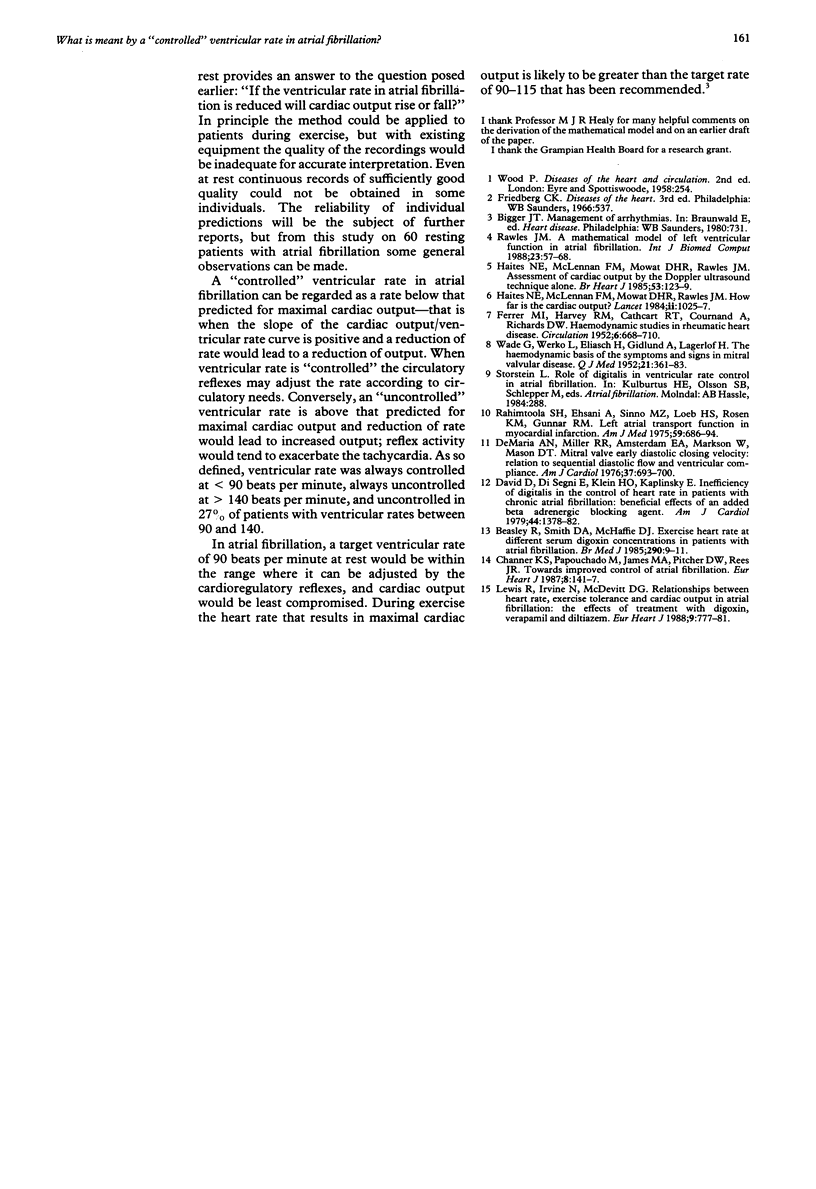
Selected References
These references are in PubMed. This may not be the complete list of references from this article.
- Beasley R., Smith D. A., McHaffie D. J. Exercise heart rates at different serum digoxin concentrations in patients with atrial fibrillation. Br Med J (Clin Res Ed) 1985 Jan 5;290(6461):9–11. doi: 10.1136/bmj.290.6461.9. [DOI] [PMC free article] [PubMed] [Google Scholar]
- Channer K. S., Papouchado M., James M. A., Pitcher D. W., Rees J. R. Towards improved control of atrial fibrillation. Eur Heart J. 1987 Feb;8(2):141–147. doi: 10.1093/oxfordjournals.eurheartj.a062241. [DOI] [PubMed] [Google Scholar]
- David D., Segni E. D., Klein H. O., Kaplinsky E. Inefficacy of digitalis in the control of heart rate in patients with chronic atrial fibrillation: beneficial effect of an added beta adrenergic blocking agent. Am J Cardiol. 1979 Dec;44(7):1378–1382. doi: 10.1016/0002-9149(79)90456-9. [DOI] [PubMed] [Google Scholar]
- DeMaria A. N., Miller R. R., Amsterdam E. A., Markson W., Mason D. T. Mitral valve early diastolic closing velocity in the echocardiogram: relation to sequential diastolic flow and ventricular compliance. Am J Cardiol. 1976 Apr;37(5):693–700. doi: 10.1016/0002-9149(76)90362-3. [DOI] [PubMed] [Google Scholar]
- Haites N. E., McLennan F. M., Mowat D. H., Rawles J. M. Assessment of cardiac output by the Doppler ultrasound technique alone. Br Heart J. 1985 Feb;53(2):123–129. doi: 10.1136/hrt.53.2.123. [DOI] [PMC free article] [PubMed] [Google Scholar]
- Haites N. E., McLennan F. M., Mowat D. H., Rawles J. M. How far is the cardiac output? Lancet. 1984 Nov 3;2(8410):1025–1027. doi: 10.1016/s0140-6736(84)91118-8. [DOI] [PubMed] [Google Scholar]
- Lewis R. V., Irvine N., McDevitt D. G. Relationships between heart rate, exercise tolerance and cardiac output in atrial fibrillation: the effects of treatment with digoxin, verapamil and diltiazem. Eur Heart J. 1988 Jul;9(7):777–781. doi: 10.1093/eurheartj/9.7.777. [DOI] [PubMed] [Google Scholar]
- Rahimtoola S. H., Ehsani A., Sinno M. Z., Loeb H. S., Rosen K. M., Gunnar R. M. Left atrial transport function in myocardial infarction. Importance of its booster pump function. Am J Med. 1975 Nov;59(5):686–694. doi: 10.1016/0002-9343(75)90229-6. [DOI] [PubMed] [Google Scholar]
- Rawles J. M. A mathematical model of left ventricular function in atrial fibrillation. Int J Biomed Comput. 1988 Oct;23(1-2):57–68. doi: 10.1016/0020-7101(88)90063-3. [DOI] [PubMed] [Google Scholar]
- WADE G., WERKO L., ELIASCH H., GIDLUND A., LAGERLOF H. The haemodynamic basis of the symptoms and signs in mitral valvular disease. Q J Med. 1952 Oct;21(84):361–383. [PubMed] [Google Scholar]


